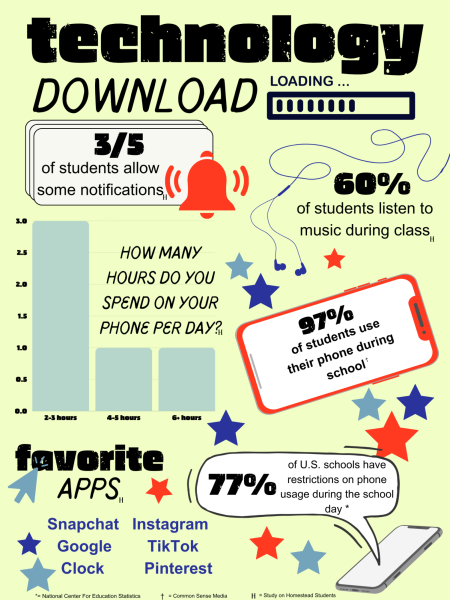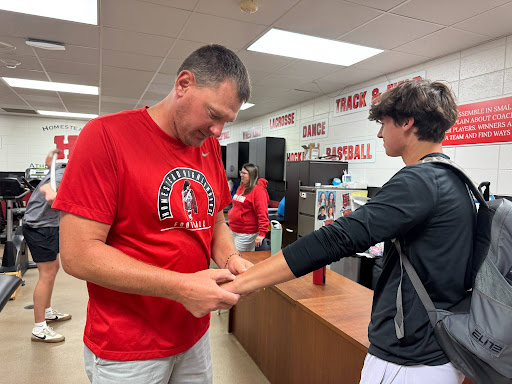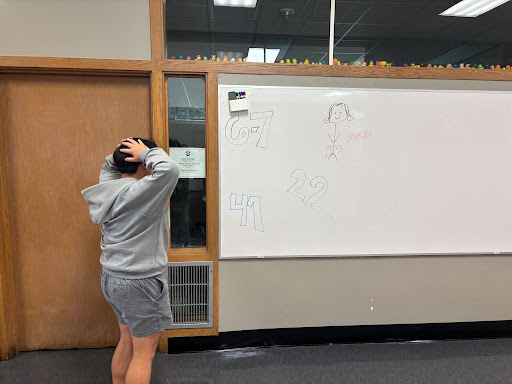Across the country, bills limiting phone usage during school hours are becoming laws.
A new law was passed in Indiana requiring school districts to ban students from using phones during class.
Indiana House member Julie McGuire told National Public Radio (NPR) that she supported the bill.
“While we cannot control the amount of time students spend on social media outside school hours, we can provide reprieve during the seven hours a day that should be focused on learning,” McGuire said.
According to the National Center for Education Statistics, 77% of U.S. schools have restrictions on phone usage during the school day.
Nevertheless, restrictions do not deter students from their phones. Common Sense Media reported that 97% of students use their phones at school. Teachers and administrators are trying to find ways to limit usage during school hours.
One resolution, phone pockets, are a familiar sight in many classrooms across the nation, including Homestead. James Granger, high school science teacher in Los Angeles, California, told AP News how important the pockets are to his students’ success.
“The only solution that works is to physically remove the cellphone from the student,” Granger said.
In Wisconsin, school districts are allowed to create their own guidelines.
“Some districts ban phones altogether during the school day, allowing them only during non-class time. Others have policies broken down by age. Still, others allow teachers to make their own rules,” Alec Johnson, reporter from the Milwaukee Journal Sentinel, said.
Currently, Homestead’s student handbook states that phones are permitted “before school, during passing times, at lunch while in the cafeteria, during study hall, and after school.”
“I use my phone at school in between classes sometimes, and at the end of classes when we are packed up,” Anya Mikhailenko, Homestead sophomore, said.
However, some believe there should be more restrictions. Harrison Palzewicz, computer science teacher, thinks phones should not be present in the classroom.
“I would support a zero policy. Since our school is a “1-to-1” school now, everyone has a laptop, that should be enough of a resource instead of having phones,” Palzewicz said.
Palzewicz also mentioned the distractions that phones impose on learning.
“Even if it’s in their backpack, it still comes out occasionally because there’s always the temptation to go check one thing,” he said.
Mary Beth Sesselmann, school psychologist, pointed out the social repercussions when phones are present.
“Someone could lose themselves in their phone a little bit rather than talking to those around them and building positive relationships,” Sesselmann said.
Students have noticed this phenomenon as well.
“Sometimes it feels like everyone is on it, and it’s harder to have conversations with them and enjoy their presence,” Mikhailenko said.
Despite this, phones have their advantages. Sesselmann noted their convenience in case of an emergency.
“I appreciate students having the ability to be able to communicate with parents,” Sesselmann said.
There are many reasons as to why students should or should not have access to their phones during school hours. However, Wisconsin is yet to introduce state-wide legislation on phones in schools.
Senate Bill 830, which relates to the usage of cellphones in school zones, was presented to the Wisconsin State Legislature in December of 2023 but has not been passed.
“I think that the restrictions are fine, and as long as the students are getting their work done it doesn’t matter that they go on their phones,” Mikhailenko said.









